Sometimes a vehicle can have engine hesitation during acceleration. When the engine hesitates, it may seem like the vehicle has lost power or like it’s going to stop. It may even have a jerking sensation. This often happens at lower speeds.
One of the things that can cause engine hesitation is a faulty variable valve timing solenoid also referred to as a variable valve timing oil control valve. This part sends information to the vehicle’s computer to determine ignition timing and adjust valve lift or operation. Activation occurs when the vehicle is pulling additional weight traveling uphill or when the gas pedal is quickly pushed down.This part is located at the front of the engine on the pulley side, somewhere below the valve cover.
A faulty variable valve timing solenoid can cause a check engine light to turn on which can show a number of different trouble codes which I’ve listed below:
Variable Valve Timing Solenoid (VVT) OBD2 Fault Codes:
P0010 P0011 P0012 P0013 P0014 P0015 P0020 P0021 P0022 P0023 P0024 P0025 P0028 P1349
You can find it with the diagnostic scanner, if you do not have a diagnostic scanner then take the vehicle to an auto parts store which will normally perform this service for free.
A faulty variable valve timing solenoid can cause engine hesitation or misfire due to not receiving the proper voltage, being worn out,being coated with varnish having dirty or low oil in the engine or even from a dirty clogged variable valve timing solenoid filter screen.
Procedure:
To inspect the operation of the variable valve timing solenoid will first need to unplug the electrical connection attached to it.
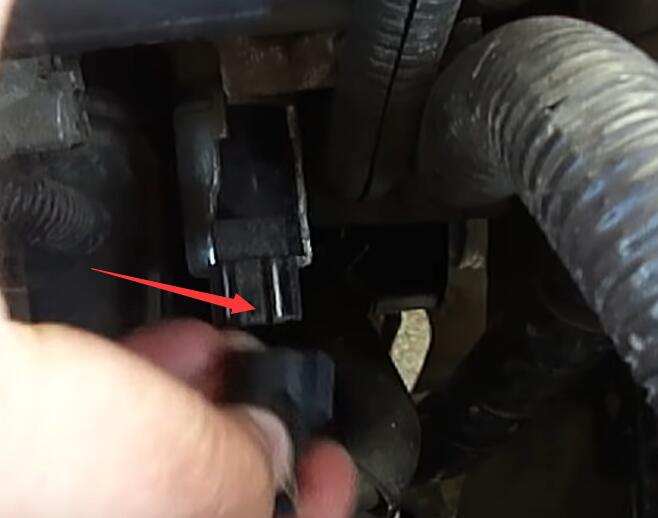
Turn the ignition key to the “ON” postition (do not start)
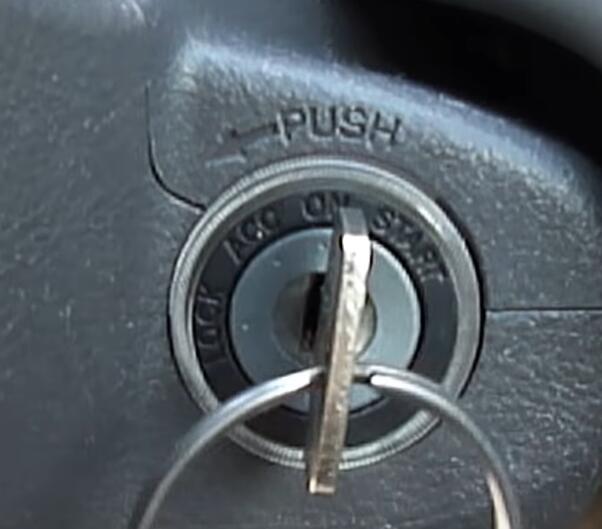
Take a digital voltmeter and set it to DC volts
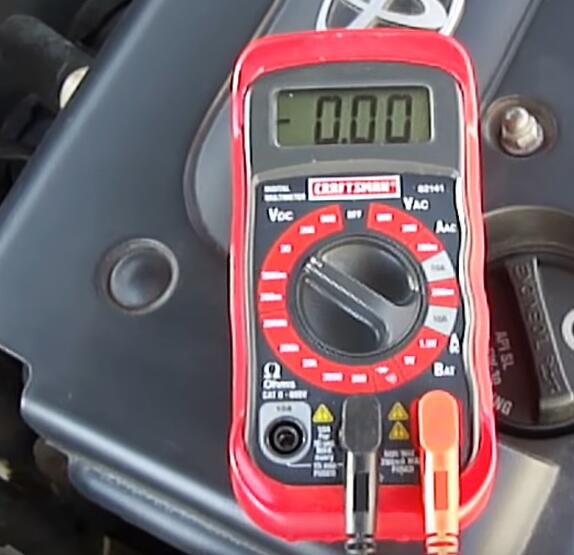
Touch the two test leads to the two electrical connections
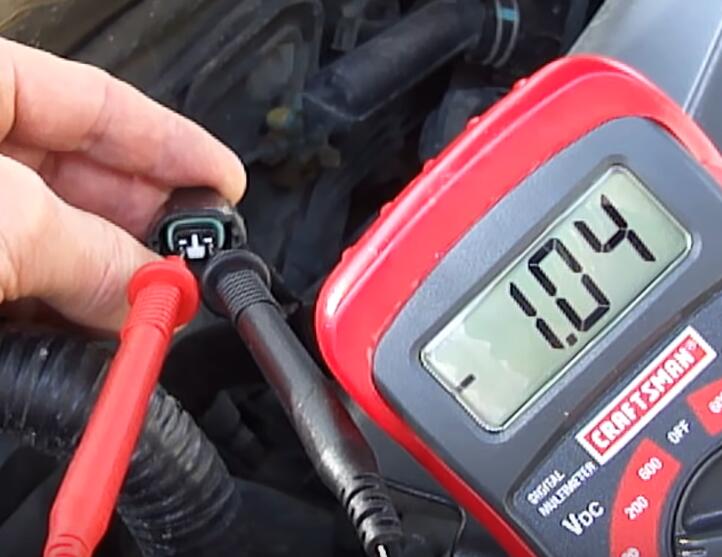
You can see there is voltage. If there’s no voltage then it need to check for shorts in the wiring.
Remove the ignition key. Next we need to remove the variable valve timing solenoid to inspect its operation.
Unscrew the bolt

Remove the oil control valve
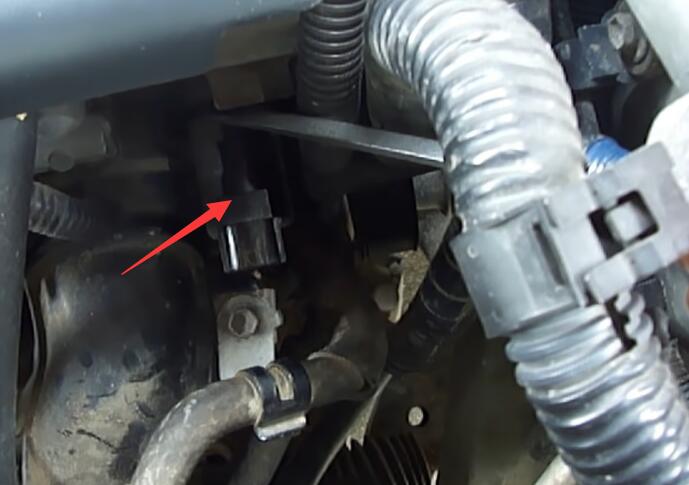
Take two alligator clip test leads and attach them to the two electrical connections on the variable valve timing solenoid.
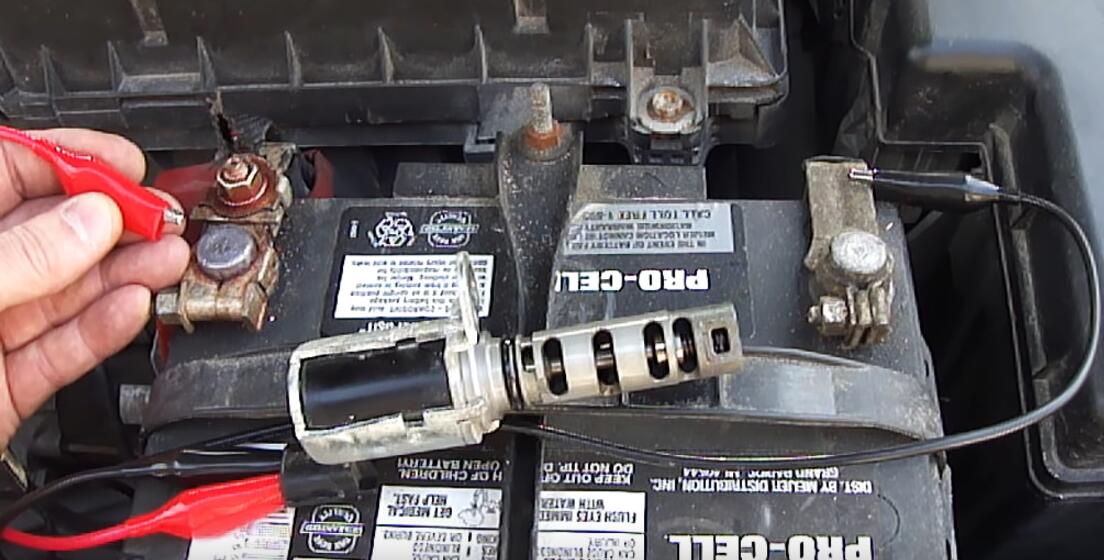
Take the other ends of the alligator clips and attach one to the negative battery connection and touch and release the other one on the positive battery connection to see if the valve moves freely back and forth.If it doesn’t move back and forth freely then it might be replaced.
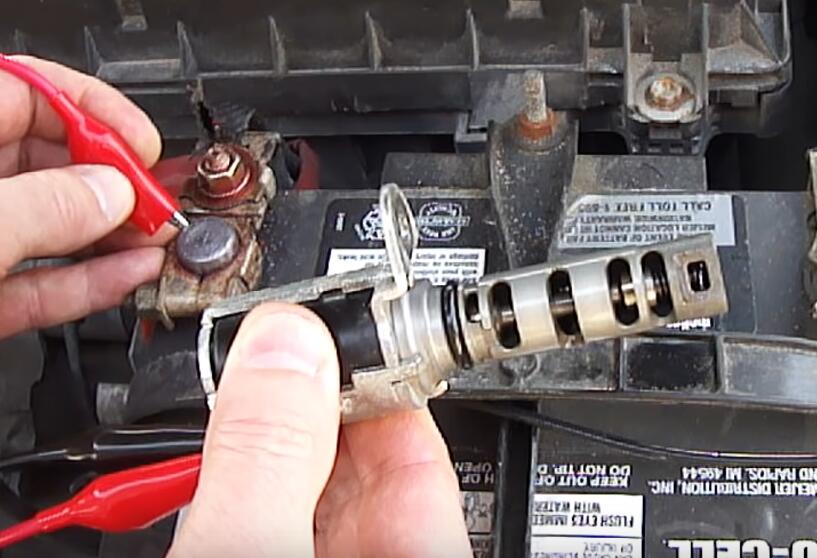
In our case it moves back and forth freely.
Set your digital voltmeter on the 200 ohms setting and place your two probes on the two electrical connections to measure the coil resistance.
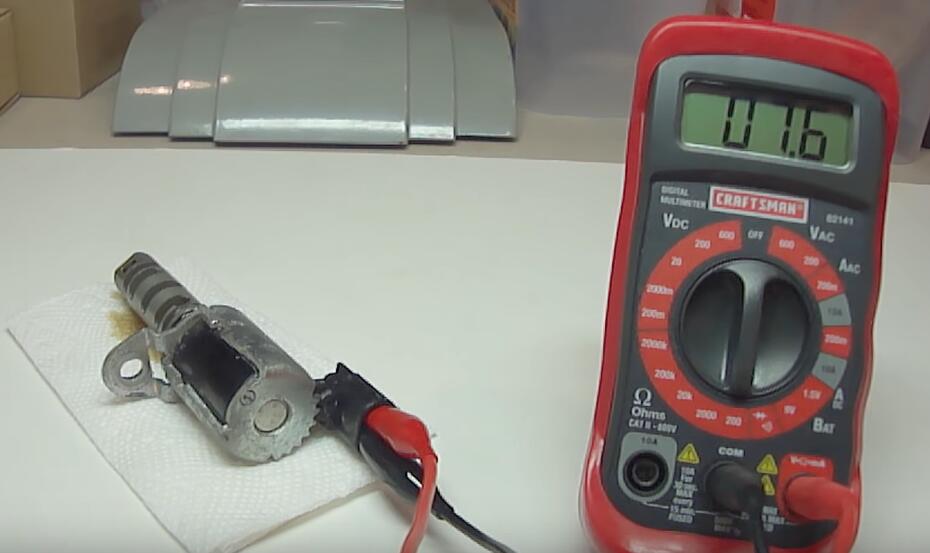
It shows 7.6 ohms, it’s in the acceptable range. You’ll need to find the ohms range for your specific coil, if it’s not in the acceptable range then you’ll need to replace it.
Set digital voltmeter on the 200ohm setting and place one probe on the bracket , take the other probe and check each electrical connection to check the coil is not grounded set .
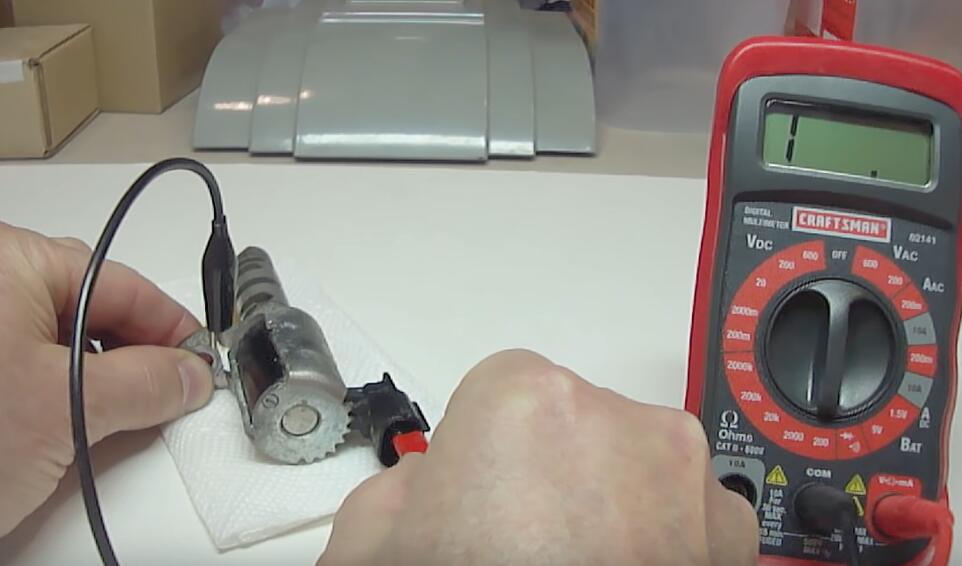
You should not get a reading , if you do then you need to replace it.
Last step ,manually move the valve back and forth to check if it smooth
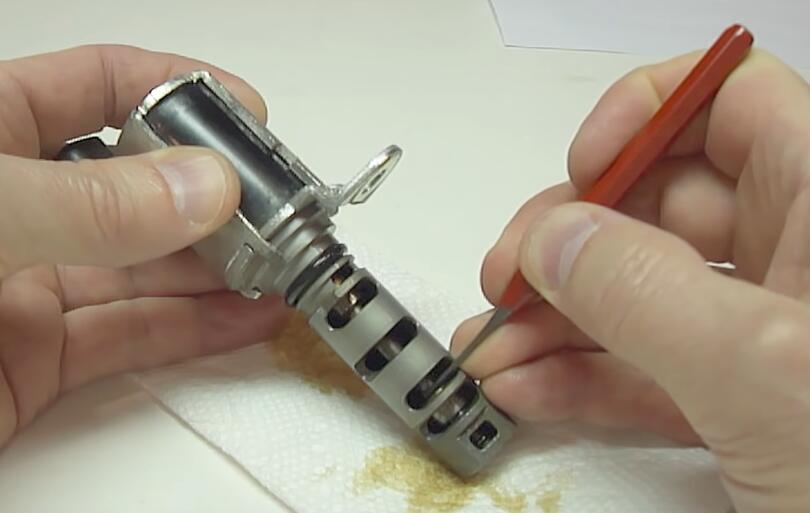
If it’s not smooth, you need to clean it. If still don’t smooth after cleaning, that you need to replace it.
if you want to know more about VVT, please click here: VVT.